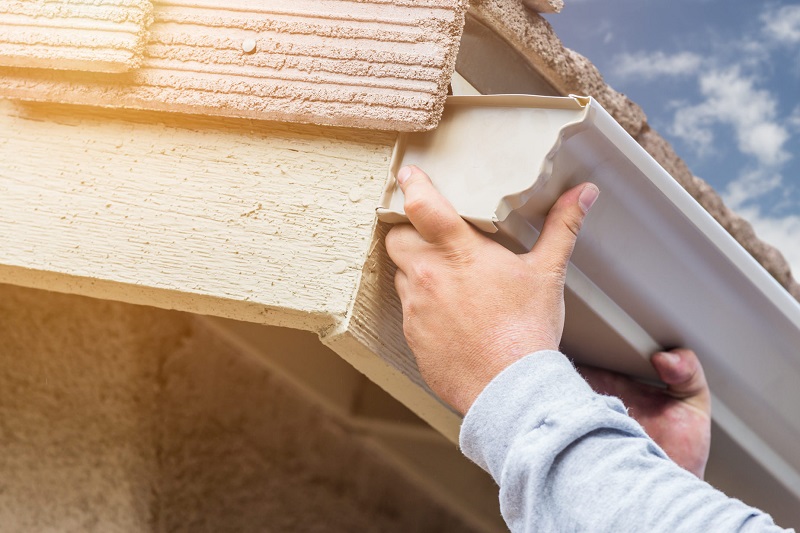
Gutters might not be the first thing that comes to mind when you think about your home’s design and functionality, but they play a crucial role in maintaining its structural integrity. Properly designed, installed, and maintained gutters are essential for efficient rainwater management, preventing water damage, and ensuring the overall well-being of your house. In this article, we’ll dive into the world of gutter standards, exploring the various guidelines and regulations that govern their design, installation, and maintenance. So, grab a cup of coffee, and let’s unravel the standards for gutters!
Understanding the Importance of Gutter Standards
Gutters might seem like a simple addition to a home’s exterior, but they have a significant impact on its longevity and functionality. Gutter standards guide ensuring that these seemingly ordinary features are well-designed, correctly installed, and regularly maintained. Without adhering to these standards, the risk of water damage, leaks, and structural issues increases substantially.
ANSI/SPRI GT-1: Guiding Gutters in the United States and Canada
In North America, the American National Standards Institute (ANSI) and the Single Ply Roofing Industry (SPRI) have collaborated to create the ANSI/SPRI GT-1 standard. This standard encompasses the design, testing, and installation of gutters and downspouts, providing comprehensive guidelines to ensure their effectiveness.
BS EN 12056-3: European Excellence in Gutter Design
Across the pond in Europe, the BS EN 12056-3 standard takes the lead. This European norm outlines the design and installation of rainwater drainage systems, including gutters and downspouts. It ensures that the complexities of climate and architecture are considered for optimal rainwater management.
AS/NZS 1170.2: Elevating Gutter Standards in Australia and New Zealand
Australia and New Zealand follow the AS/NZS 1170.2 standard. This regulation covers not only gutter and downspout design and installation but also addresses broader concerns related to structural design actions, ensuring that gutter systems are integrated seamlessly into the overall building framework.
Navigating Local and Regional Gutter Standards
Apart from these international standards, there might be local or regional regulations that come into play. It’s crucial to liaise with your local building authority to determine which specific standards apply to your project. This step guarantees that you’re meeting the necessary requirements and adhering to the guidelines that align with your location’s unique conditions.
Key Factors Addressed by Gutter Standards
Gutter Size Matters: Matching Rainfall and Capacity
Gutters must be sized appropriately to handle the amount of rainfall in your area. In regions with heavy rainfall, larger gutters are essential to accommodate the increased water flow. Conversely, areas with less rain can get by with smaller gutter sizes.
The Material Equation: Metal, Plastic, or Concrete?
Gutters can be crafted from various materials, each with its own set of benefits and considerations. Metal gutters, like aluminum and steel, offer durability and can handle heavy rainfall. Plastic gutters are lightweight and resistant to corrosion, making them suitable for diverse environments. Concrete gutters are robust and long-lasting, ideal for areas prone to extreme weather conditions.
Installing Gutters with Precision: Following Standard Procedures
Proper installation is paramount to the functionality of gutters. Following the procedures outlined in the standards guarantees that gutters are positioned at the correct angle, with adequate support and positioning of downspouts to facilitate efficient drainage.
Maintenance Magic: Ensuring Longevity and Functionality
Regular maintenance ensures that gutters remain effective over time. Cleaning them of debris, leaves, and dirt prevents clogs that can lead to water overflow and leaks. Maintenance schedules will vary based on the gutter material and local climate, but adhering to standards helps keep gutters in tip-top shape.
The Benefits of Compliance with Gutter Standards
Adhering to gutter standards offers numerous benefits for homeowners. By installing gutters that align with these regulations, you’re investing in a system that efficiently manages rainwater, preventing damage to your home’s foundation, walls, and landscaping. Moreover, compliant gutter systems enhance your property’s curb appeal and resale value, showcasing a responsible approach to homeownership.
Conclusion
Gutters might seem like a minor aspect of your home, but they play a major role in maintaining its structural integrity and aesthetics. International, regional, and local standards exist to guide the design, installation, and maintenance of gutters, ensuring they function optimally. By following these standards, you’re not only protecting your investment but also contributing to a more sustainable and water-damage-free living environment.
FAQs
Do gutter standards apply to all types of buildings?
Yes, gutter standards are designed to ensure rainwater management in various types of structures, from residential homes to commercial buildings.
Can I install gutters myself without considering the standards?
While DIY installation is possible, it’s highly recommended to follow the standards to ensure proper functionality and longevity.
How often should I clean my gutters?
Cleaning frequency depends on factors such as gutter material, local climate, and nearby vegetation. It’s best to clean them at least twice a year.
What happens if I ignore gutter standards?
Ignoring gutter standards can lead to inadequate drainage, water damage to your property, and even potential structural issues.
Are there additional benefits to compliant gutter systems?
Absolutely, compliant gutter systems not only prevent water damage but also contribute to energy efficiency and water conservation efforts.






